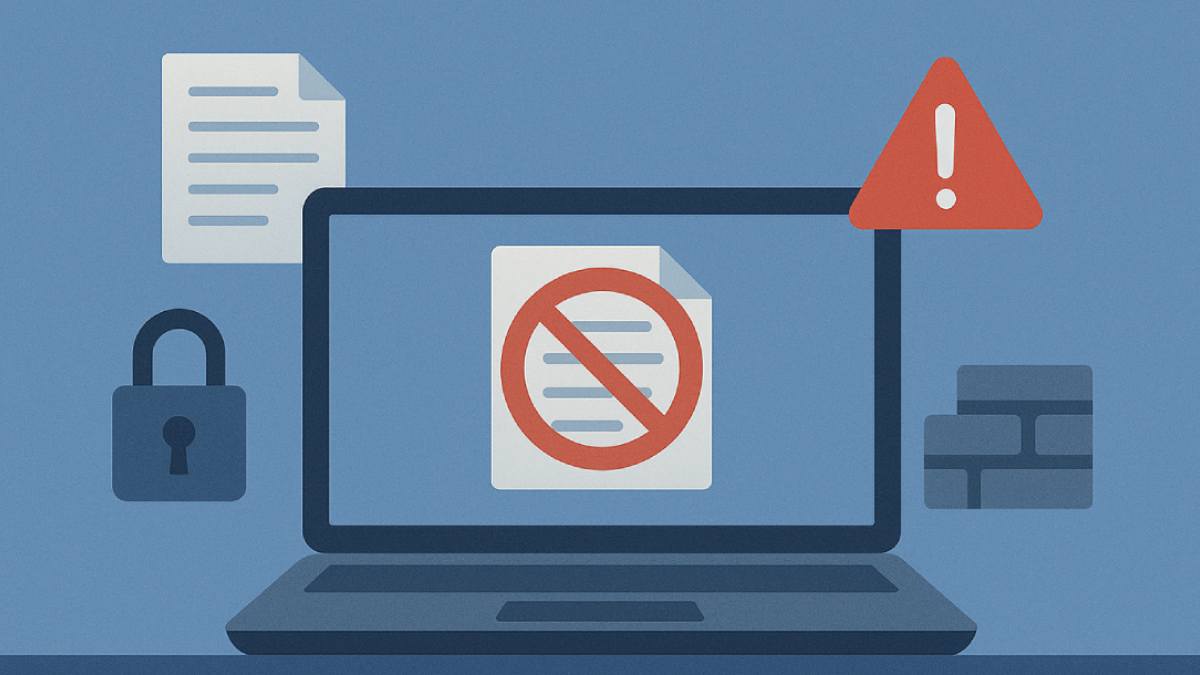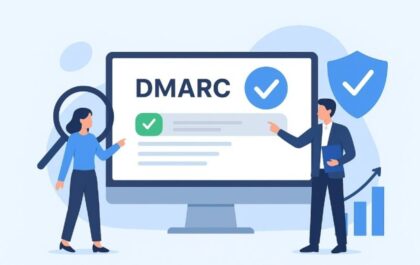You’re sitting there staring at another security training quiz, and boom – there’s that question about which of the following is a step you should not take to protect against spillage. I know that feeling. You’re second-guessing yourself, wondering if you’re overthinking it, and probably getting frustrated because these questions seem designed to trip you up.
Trust me, I’ve been there more times than I care to admit. After dealing with spillage incidents, investigating security breaches, and yes, making my own share of mistakes over the years, I’ve learned that understanding what NOT to do is just as important as knowing the right steps. Sometimes more important.
Table of Contents
ToggleWhat Spillage Actually Means (Beyond the Textbook Definition)
Before we dive into the wrong steps people take, let’s get real about what spillage actually is. The official definition sounds all formal and boring, but here’s what it really means: spillage happens when classified or sensitive information ends up somewhere it shouldn’t be.
Think of it like this – you know how when you’re pouring coffee and some splashes onto the counter? Information spillage is similar. The “coffee” (classified info) was supposed to stay in the “cup” (authorized system), but it ended up on the “counter” (unauthorized system or location).
I’ve seen spillage happen in the most ridiculous ways:
- Someone copying classified data to their personal laptop “just to work on it at home”
- Accidentally forwarding a classified email to an unclassified system
- Plugging a classified USB drive into the wrong computer
- Even taking photos of classified documents with personal phones
The scary part? Most people don’t realize they’ve caused spillage until it’s too late.
Common Wrong Steps People Take (And Why They Backfire)
The “I’ll Handle It Myself” Approach
This is probably the biggest mistake I see, and honestly, I made this one early in my career too. Someone realizes they’ve caused spillage, and their first instinct is to fix it themselves without reporting it.
Why this backfires spectacularly:
- You might miss contaminated files or systems
- The spillage could be worse than you think
- You’re violating reporting requirements
- You could accidentally make the spillage worse
- Investigators will find out anyway (they always do)
I watched a colleague try to “clean up” a spillage by deleting files from an unclassified system. Turns out, those files had already been backed up, synced to cloud storage, and cached in multiple locations. What started as a minor incident became a major investigation because he didn’t report it immediately.
The “Let Me Just Move It Back” Solution
Which of the following is a step you should not take to protect against spillage – this one always shows up as a wrong answer choice, and for good reason. People think they can just transfer the spilled information back to the correct system and call it fixed.
Nope. Here’s why this doesn’t work:
- The unauthorized system is now contaminated
- You might create additional spillage during the transfer
- There could be copies or traces you don’t know about
- You’re handling classified info on an unauthorized system
Trying to “Sanitize” Systems Yourself
I’ve seen people try to use regular delete functions, disk cleanup tools, or even reformatting to clean spillage. This is like trying to clean up a chemical spill with paper towels – you’re not qualified for this job, and you’ll probably make it worse.
Why DIY sanitization fails:
- Regular deletion doesn’t actually remove data
- File fragments remain in system caches
- Network logs might still contain traces
- You need specialized tools and procedures
- Only trained IT security personnel should attempt sanitization
The Right Steps vs. Wrong Steps Breakdown
What You SHOULD Do When Spillage Happens
Let me walk you through what actually works, based on real incidents I’ve handled:
Immediate response steps:
- Stop using the affected system immediately
- Don’t try to move, copy, or delete anything
- Report the incident to your security officer right away
- Document exactly what happened (while it’s fresh in your memory)
- Secure the affected system until help arrives
What You Should NEVER Do
When you see which of the following is a step you should not take to protect against spillage on a test, these are usually the wrong answers they’re fishing for:
Common wrong approaches:
- Attempting to transfer spilled data back to classified systems
- Using standard deletion methods to “clean” the spillage
- Waiting to see if anyone notices before reporting
- Trying to sanitize systems with regular IT tools
- Sharing details of the spillage with unauthorized personnel
- Continuing to use contaminated systems
- Making copies of spilled data for “documentation purposes”
Real-World Spillage Scenarios (And What Went Wrong)
The Email Forward That Became a Nightmare
A few years back, I investigated a spillage where someone received a classified email on their government account and forwarded it to their personal Gmail to “read it later at home.” They realized their mistake immediately and tried to delete it from Gmail.
What they did wrong:
- Assumed deleting the email would fix everything
- Didn’t report the incident immediately
- Tried to log into the personal account from their work computer to “clean it up”
- Created additional spillage by accessing personal email on government systems
What they should have done:
- Reported the spillage immediately
- Stopped using both the personal email and work computer
- Let security professionals handle the investigation and cleanup
The USB Drive Mix-Up
This one still makes me cringe. Someone grabbed the wrong USB drive from their desk and plugged a classified drive into an unclassified computer. The autorun feature started copying files before they realized the mistake.
The cascade of wrong decisions:
- Yanked the USB drive out immediately (potentially corrupting files)
- Used the “secure delete” function on the unclassified computer
- Reformatted the USB drive “to be safe”
- Didn’t report it for three days, hoping no one would find out
The “Helpful” Contractor
A contractor noticed spillage on a system they were working on and decided to be helpful by “cleaning it up” before reporting it. They used military-grade wiping software and thought they’d solved the problem.
Why this went sideways:
- They weren’t authorized to handle classified spillage
- The wiping process destroyed evidence needed for the investigation
- They contaminated additional systems during the cleanup attempt
- The original spillage was actually part of a larger security incident
Prevention Strategies That Actually Work
System Separation Awareness
The best way to avoid spillage is to understand why we separate systems in the first place. It’s not just bureaucratic nonsense – there are real technical and security reasons, much like the handling of voice datasets in secure environments to avoid data leakage.
Key prevention mindset:
- Treat system boundaries as sacred
- When in doubt, ask before transferring anything
- Assume all storage devices are contaminated until proven otherwise
- Never use personal devices for government work
- Keep classified and unclassified work completely separate
Building Good Habits
I’ve developed some personal rules over the years that have kept me out of trouble:
My personal spillage prevention rules:
- Color-code everything (different colored cables, labels, etc.)
- Never work on classified and unclassified tasks simultaneously
- Keep classified and unclassified storage devices in different locations
- Double-check system classifications before accessing anything
- Take breaks between working on different classification levels
Team Communication
Some of the worst spillage incidents I’ve seen happened because people were afraid to ask questions or admit uncertainty.
Creating a safety culture:
- Make it okay to ask “stupid” questions about classification
- Share spillage lessons learned (without compromising investigations)
- Regular refresher training on proper procedures
- Clear escalation paths for concerns
- No blame culture for honest mistakes that get reported quickly
Technology Challenges and Modern Spillage
The spillage landscape keeps changing as technology evolves. Cloud storage, mobile devices, and remote work have created new challenges that didn’t exist when the original rules were written.
Modern spillage vectors:
- Automatic cloud synchronization
- Mobile device photo backups
- Video conferencing recordings
- Collaborative software platforms
- Virtual private networks (VPNs)
Remote Work Complications
Working from home has made spillage prevention way more complicated. I’ve seen incidents involving:
- Family members accidentally accessing government systems
- Personal and government video calls getting mixed up
- Home networks storing cached government data
- Children using computers that had classified information
The Investigation Process (What Really Happens)
When spillage gets reported, here’s what actually happens behind the scenes:
Initial Response
Security teams move fast when spillage is reported. Within hours, you’ll typically see:
- Affected systems get isolated from networks
- Forensic imaging of contaminated drives
- Personnel interviews to understand the scope
- Preliminary damage assessment
- Notification of appropriate authorities
The Deep Dive
The investigation phase can take weeks or months:
- Complete forensic analysis of all affected systems
- Network traffic analysis to track data movement
- Personnel security reviews
- Technical reconstruction of the incident
- Damage assessment and classification review
Learning from Spillage Incidents
Every spillage incident teaches us something about system vulnerabilities, human behavior, or process gaps. The key is learning without compromising ongoing investigations or embarrassing the people involved.
What I’ve learned from spillage investigations:
- Most incidents involve honest mistakes, not malicious intent
- Time pressure and stress increase spillage risk significantly
- Training alone isn’t enough – you need good systems and procedures
- Early reporting makes cleanup much easier and less expensive
- The cover-up is always worse than the original incident
Moving Forward with Spillage Awareness
Understanding which of the following is a step you should not take to protect against spillage isn’t just about passing tests – it’s about developing the right instincts when things go wrong.
The most important thing to remember is that spillage happens to good people who are trying to do their jobs correctly. The difference between a minor incident and a career-ending disaster usually comes down to how you respond in those first few minutes after you realize something went wrong.
When you see spillage questions on security training, remember that the wrong answers usually involve trying to fix things yourself instead of reporting and getting proper help. The system is designed to handle these incidents professionally and efficiently, but only if you let it work the way it’s supposed to.
Most importantly, knowing which of the following is a step you should not take to protect against spillage means understanding that the biggest mistake is usually trying to handle spillage alone instead of immediately involving the people who are trained and authorized to deal with it properly.
Also Read: How Should Government Owned Removable Media Be Stored: Your Complete Security Guide
Shashi Teja
Related posts
Hot Topics
Youth Sports Camps Build Character
We do not all become professional sports players; however, every child can benefit from youth sport programs. There is a…
Best DMARC Lookup Tools: Instantly Check & Verify Your DMARC Records
Choosing the best DMARC lookup tools is essential for any organization that wants to secure its email domain and prevent…



